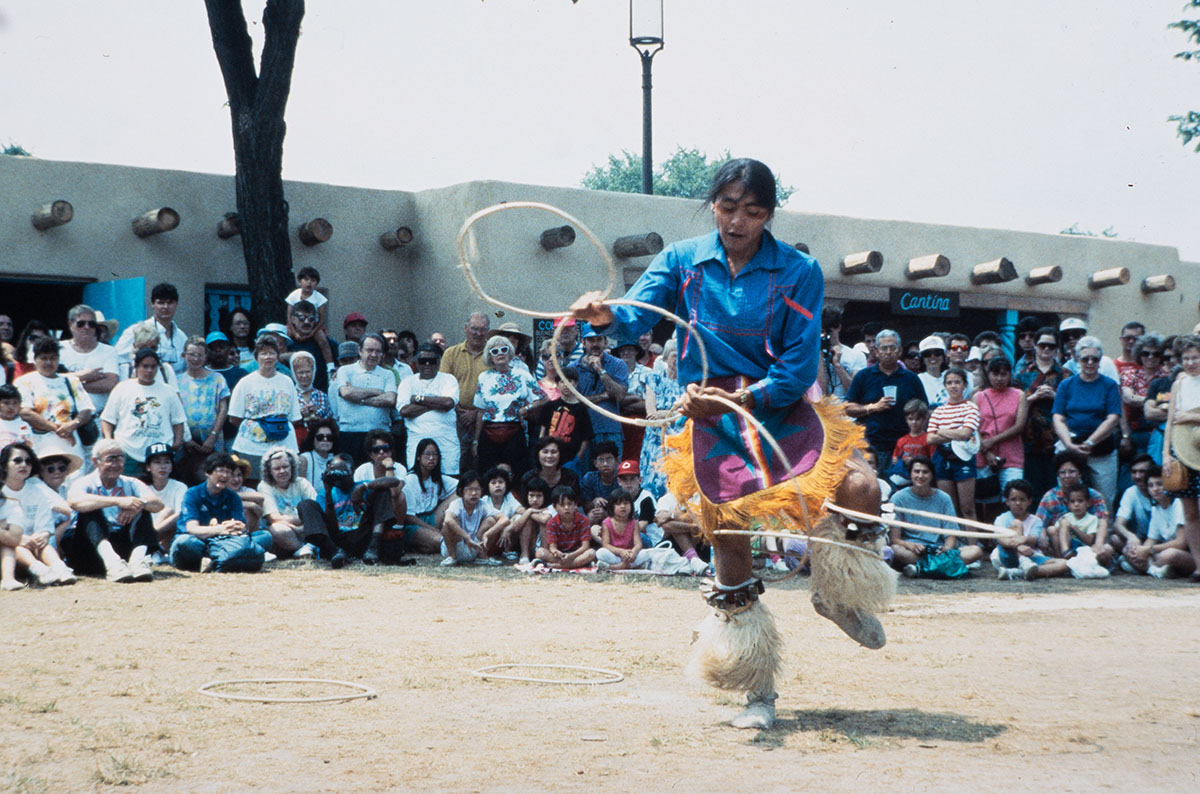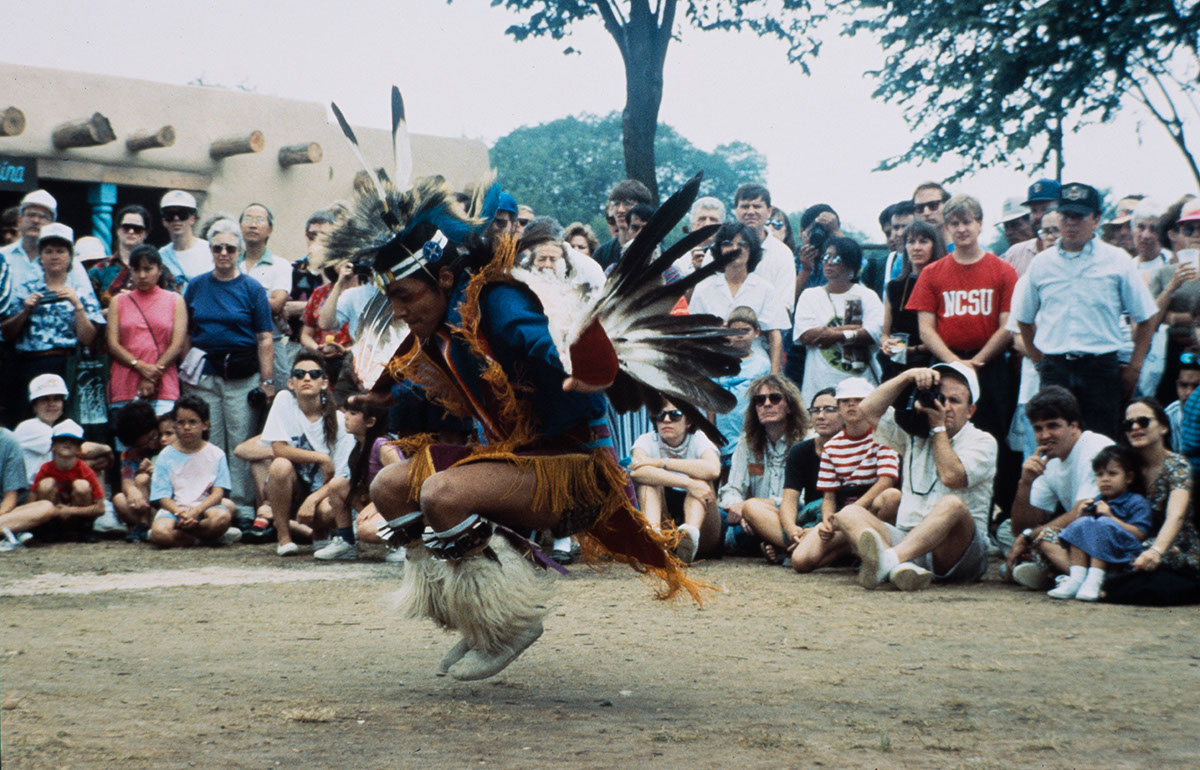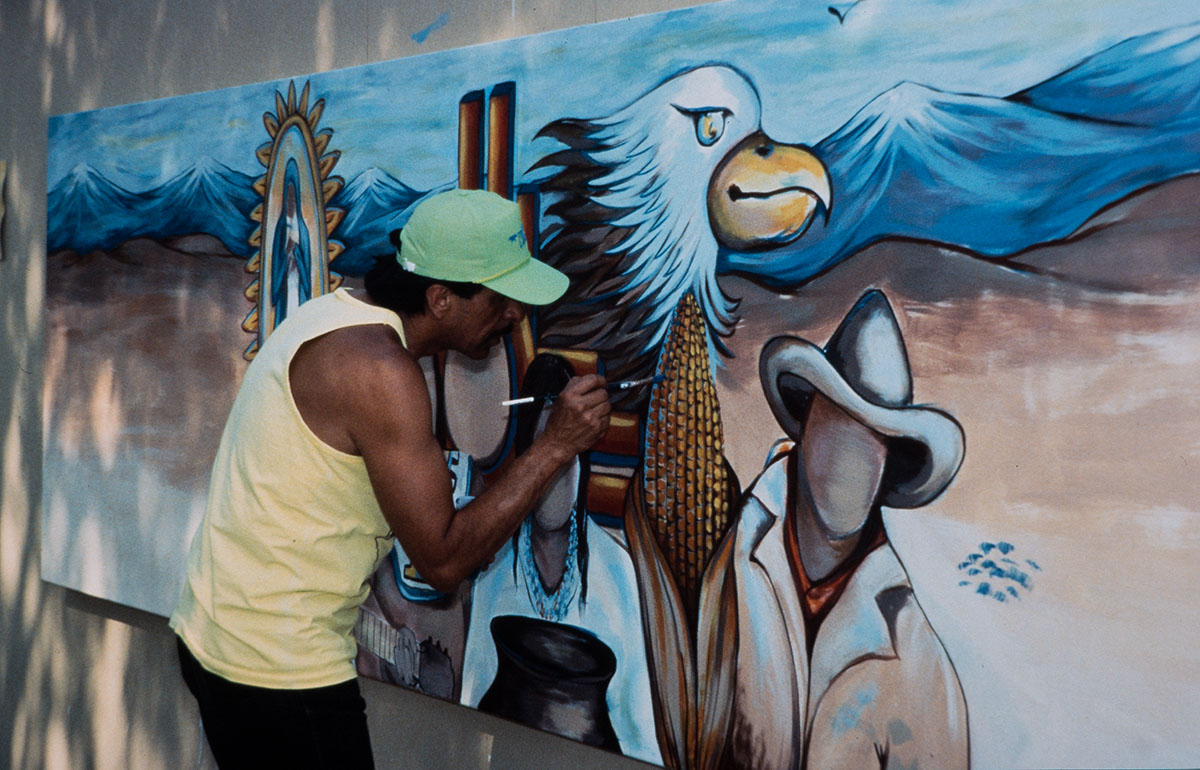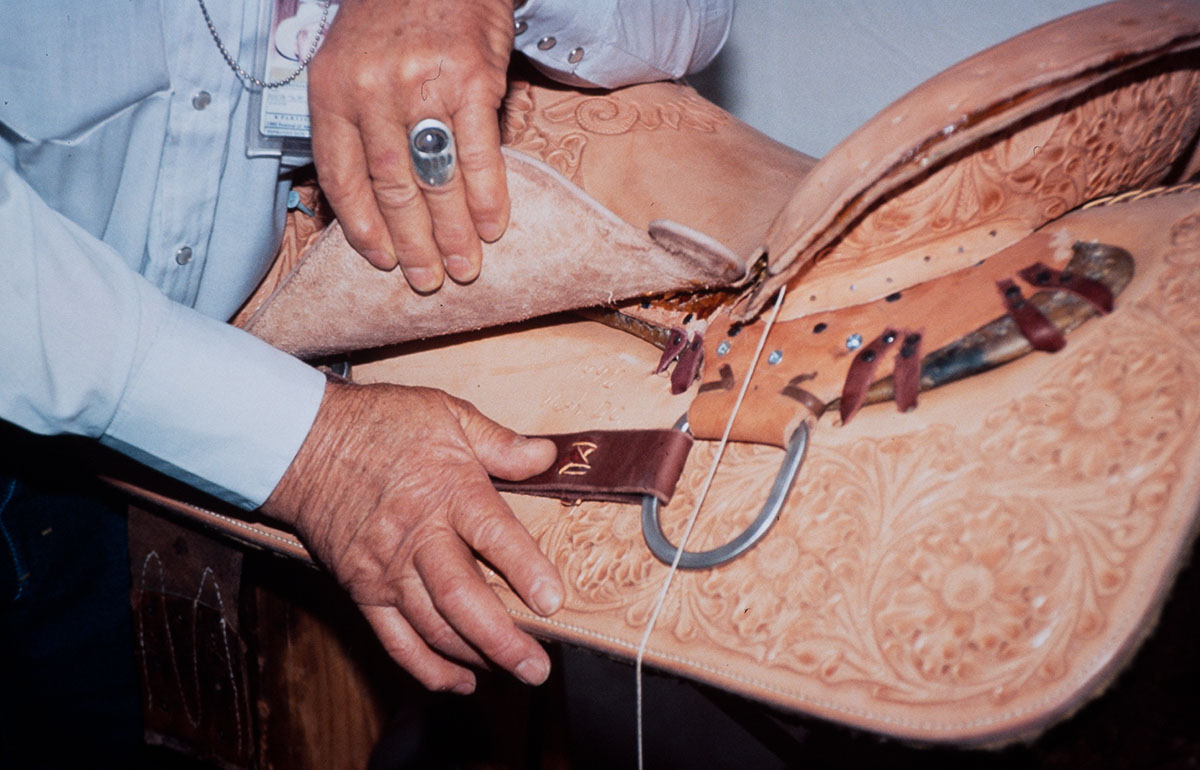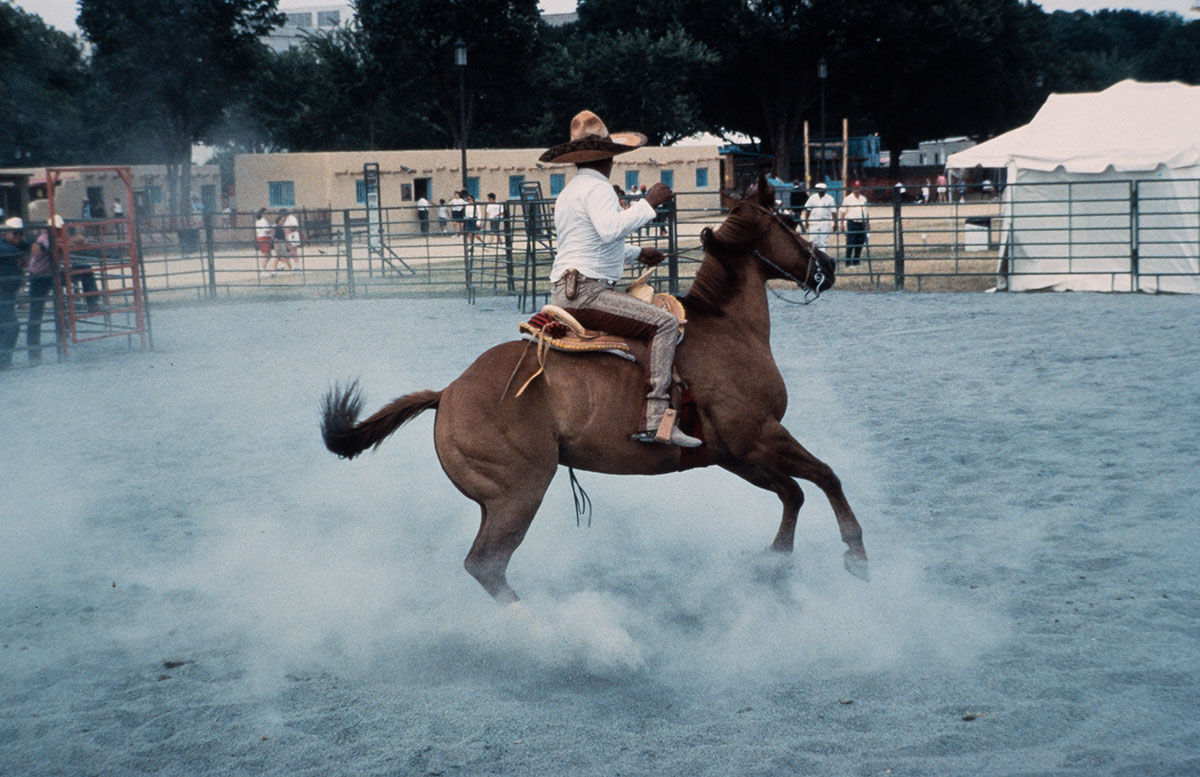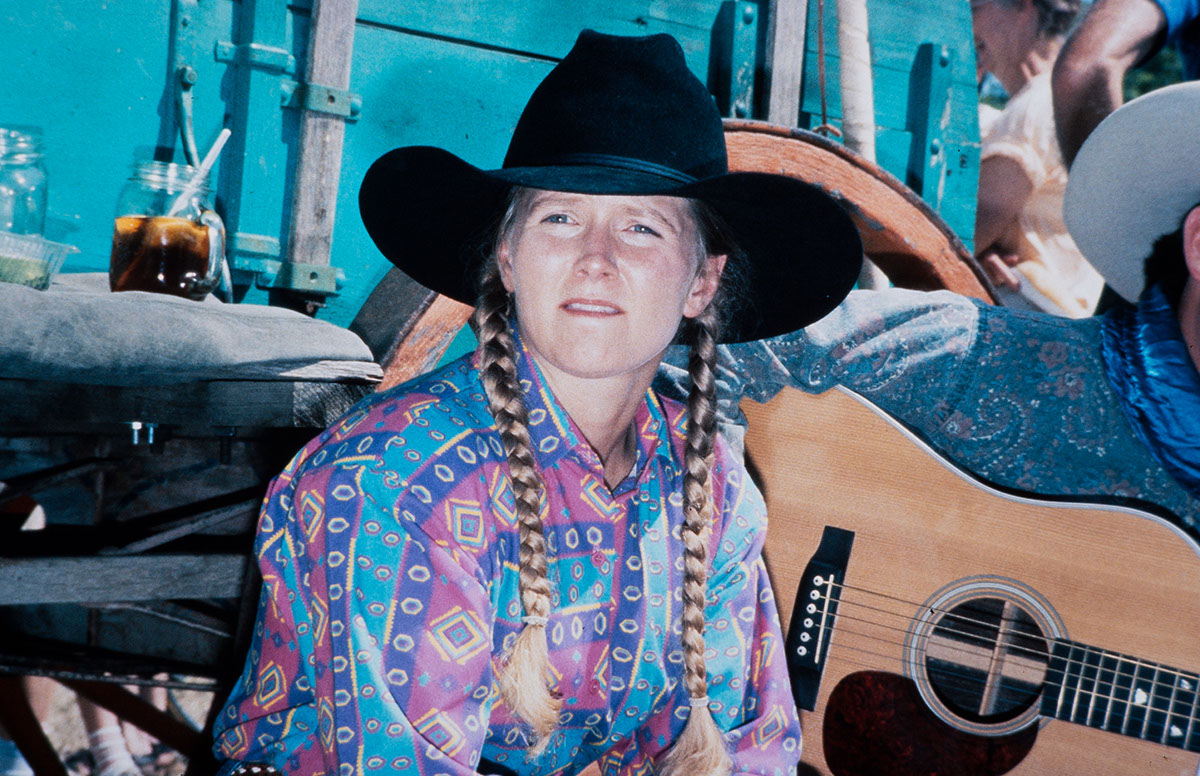Before the people there was the land. High mountains in northern New Mexico fork southward, forming arms. One curls westward to embrace the high mesa and plateau land, while the other thrusts directly south to separate the dry grasslands of the east from the fertile valley carved by the Rio Grande. Stories tell that the First People found this land when they emerged onto its surface, born from the womb of Mother Earth.
The Spanish and later the Mexicans also found this land, as they wound their way north on horseback or in carretas, following the course of the long, wild river, and establishing a permanent connection - the Camino Real - between northern New Mexico and Mexico. Then, from Texas, California, Oklahoma, came still others, determined to transform the land and tame the river. And today people still come, on family odysseys that began in Italy, Lebanon, Iran, Czechoslovakia, India, Poland, Japan, or Germany. In one short stretch, the Rio Grande recounts this history as it passes near old communities like San Juan Pueblo and Embudo, then the new atomic city, Los Alamos, and then Albuquerque, a city of a half-million people.
Five hundred years after Columbus, the complex engagement between Europe and America, which his voyage has come to symbolize, continued to produce patterns of accommodation and resistance that were presented in the 1992 Festival program. Conflicting uses and meanings for the same land seem inevitable in New Mexico, where more than 70% of the land is managed by the state or federal government, and where a significant percentage of local income is derived from tourism. Cultural traditions of New Mexico's diverse communities were not seen, at the Festival, as immutable heirlooms passed down from one generation to the next. Rather, visitors could see how today's New Mexicans shape traditions by the conflicted choices they make today, weaving a design that can never be wholly foreseen.
José Griego and Andrew Wiget were Curators, with Philippa Jackson as Research & Program Coordinator and Francesca McLean as Program Assistant.
The New Mexico program was made possible with the support of the State of New Mexico, Bruce King, Governor; with the collaboration of the Department of Tourism, the Office of Cultural Affairs, the New Mexico Arts Division, and the Museum of International Folk Art; and with the assistance of the Tourism Association of New Mexico.


